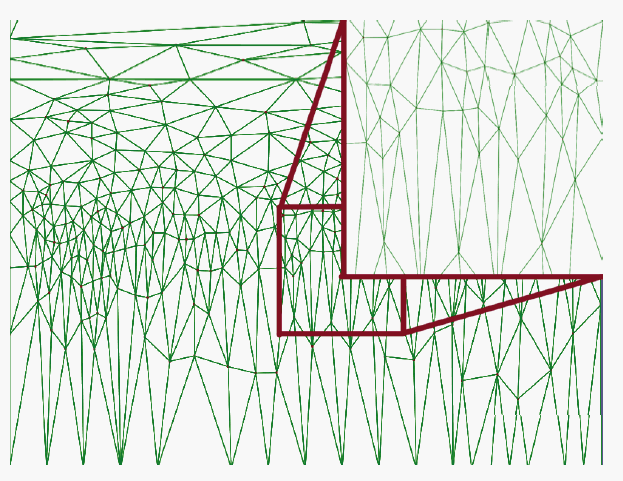-
Where :
- INRIA , Unité de Sophia Antipolis
Geometrica team
BP 93
06902 Sophia Antipolis
FRANCE
-
Information:
-
Mariette Yvinec
Tel : +33 4 92 38 77 49
e-mail: <Mariette.Yvinec@sophia.inria.fr>

|

|
An anisotropic meshing problem are usually defined in term of a metric field that is a domain where each point is associated with a symmetric tensor to be used for measuring distances as seen from this point. The goal is to build on such a domain a mesh whose elements are shaped according to the local metric. Various methods have been proposed to build anisotropic meshes. Most of them are heuristic or restricted to work only on two dimensional anisotropic metric fields.
We have recently proposed a new and simple method based on the notion
of locally uniform anosotropic meshes.
To understand how this method works, it is usefull to notice that
an anisotropic mesh can be easily obtain when the metric field is uniform
by using an affine transformation that changes the metric to the Euclidean metric,
building a Delaunay mesh in the transformed space and applying the reverse transform
to the mesh.
Our method incrementally build the set of mesh sites.
It maintains for each site in the current mesh, a local anisotropic triangulation
shaped according to the site metric and including only the site and its neighbors.
The mesh is refined by adding new sites until local triangulations
of neighboring sites are consistent and can be merged together. If some care
is taken in the choice of refinement points,
the refinement process ends. The boundary constraints are respected
in each local triangulation and therefore in the final mesh.